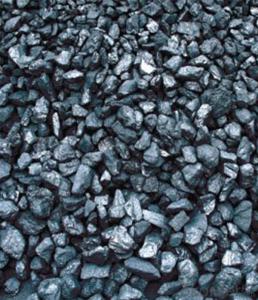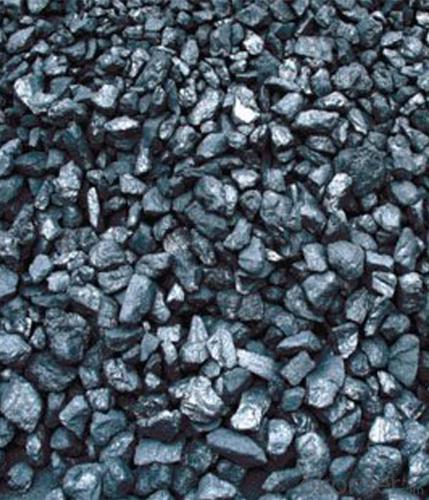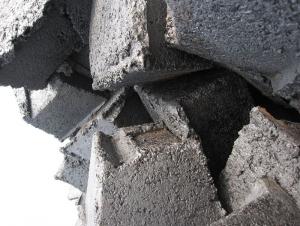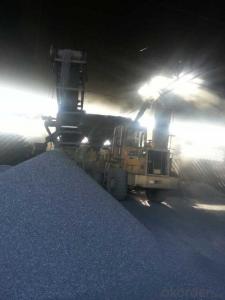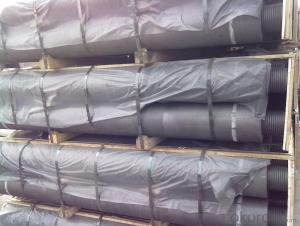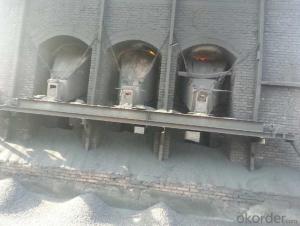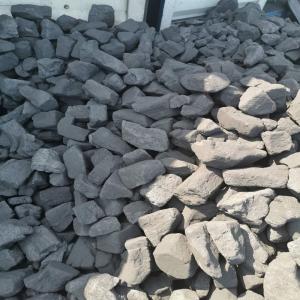Good Quality Charge Coke With Low Sulphur
- Loading Port:
- Tianjin
- Payment Terms:
- TT OR LC
- Min Order Qty:
- 20 m.t.
- Supply Capability:
- 3000 m.t./month
OKorder Service Pledge
OKorder Financial Service
You Might Also Like
Good Quality Charge Coke With Low Sulphur
Features
1. strong supply capability
2. fast transportation
3. lower and reasonable price for your reference
4.low sulphur, low ash
5.fixed carbon:95% -90%
6..sulphur:lower than 0.3%
Package
In 25KG bags or in MT bags
Product Description
Cardon additives made from well-selected Tai Xi anthracite .Mainly used in steelmaking
in electrical stove, screening water,quality,shipbuilding sandblast removing rust producingcarbon materials.Mainly industry property of it is : instead of traditional pertroleum coal of Carbon Additives,reduce the cost of steelmaking.
Specification
PARAMETER UNIT GUARANTEE VALUE
F.C.% 95MIN 94MIN 93MIN 92MIN 90MIN
ASH % 4MAX 5MAX6 MAX6.5MAX8.5MAX
V.M.% 1 MAX 1MAX1.0MAX1.5MAX 1.5MAX
SULFUR % 0.3MAX0.3MAX0.3MAX0.35MAX0.35MAX
MOISTURE %0.5MAX0.5MAX0.5MAX0.5MAX0.5MAX
Pictures:
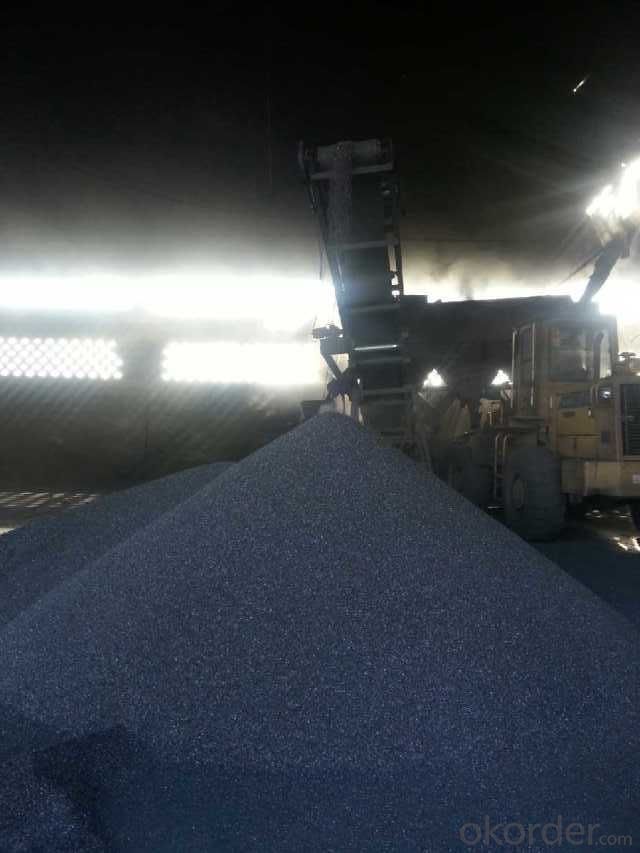
- Q: How does carbon affect the formation of acidification in lakes?
- Lakes undergo acidification due to the significant role played by carbon dioxide (CO2). Human activities, such as burning fossil fuels, release carbon dioxide into the atmosphere. This carbon dioxide can then be absorbed by lakes, resulting in the formation of carbonic acid (H2CO3), a weak acid. When carbonic acid interacts with water, it dissociates into hydrogen ions (H+) and bicarbonate ions (HCO3-). The increase in hydrogen ions causes a decrease in pH levels, making the water more acidic. This process is commonly referred to as acidification. The acidification of lakes can have detrimental effects on aquatic ecosystems. It negatively impacts the physiology and behavior of various species, including fish, amphibians, and invertebrates. Furthermore, the eggs and larvae of these organisms can be damaged by acidic waters, hindering their growth and survival. Acidification also has the potential to disrupt the composition and abundance of phytoplankton, which are vital for maintaining the overall health of the ecosystem. Additionally, high levels of acidity can result in the leaching of toxic metals, such as aluminum, from the surrounding soil and rocks. These toxic metals then dissolve in the water, posing an additional threat to aquatic organisms. Acidification can also disrupt the nutrient cycles in lakes, ultimately affecting the availability of essential nutrients for plants and animals. To summarize, the presence of carbon dioxide in the atmosphere contributes to the acidification of lakes when it is absorbed by water. This acidification has a range of negative impacts on the aquatic ecosystem, including altered physiology, impaired reproduction, and disrupted nutrient cycles. It is imperative to reduce carbon emissions and mitigate the effects of acidification to safeguard the health and diversity of lake ecosystems.
- Q: What is the role of carbon in the formation of fossil fuels?
- Carbon plays a crucial role in the formation of fossil fuels. Fossil fuels, including coal, oil, and natural gas, are formed from the remains of ancient plants and organisms that lived millions of years ago. These ancient organisms contained a significant amount of carbon, which is the primary component of fossil fuels. The process of fossil fuel formation begins with the decomposition of organic matter. When plants and organisms die, their remains accumulate in an environment with limited oxygen, such as swamps, lakes, and ocean floors. Over time, these organic materials are buried under layers of sediment, subjecting them to immense pressure and heat. Under these extreme conditions, the organic matter undergoes a process called diagenesis, which involves the breakdown of complex organic molecules into simpler compounds. This process releases gases like methane and carbon dioxide. However, the carbon-rich compounds that resist decomposition become the building blocks of fossil fuels. Over millions of years, the pressure and heat continue to transform these organic remains. The carbon-rich compounds undergo a process called catagenesis, where they get progressively altered, forming hydrocarbon chains. This transformation leads to the formation of coal, oil, and natural gas, which are all composed primarily of carbon, hydrogen, and a few other elements. The carbon present in fossil fuels is responsible for their high energy content. When burned, fossil fuels release carbon dioxide and other greenhouse gases into the atmosphere, contributing to climate change. However, the role of carbon in the formation of fossil fuels is crucial as it provides a concentrated source of energy that has been vital for human civilization and industrial development.
- Q: What are the impacts of carbon emissions on the stability of mangroves?
- Carbon emissions have detrimental effects on the stability of mangroves, which are crucial coastal ecosystems. The increased levels of carbon dioxide (CO2) in the atmosphere contribute to global warming, leading to rising sea levels and increased frequency and intensity of storms. These changes directly impact the stability of mangroves in several ways. Firstly, rising sea levels caused by global warming can result in increased inundation of mangroves. As the sea level rises, saltwater intrusion occurs more frequently, affecting the delicate balance of saltwater and freshwater in mangrove ecosystems. This can lead to the displacement and decline of mangroves, as they struggle to adapt to the changing conditions. Secondly, the increased frequency and intensity of storms associated with climate change can cause physical damage to mangroves. Mangroves act as a natural barrier, protecting coastlines from storm surges by absorbing wave energy. However, with stronger storms, the resilience of mangroves is tested, and they may be uprooted or destroyed, leaving the coastlines vulnerable to erosion and further damage. Furthermore, carbon emissions are also linked to ocean acidification, which occurs as the excess CO2 in the atmosphere is absorbed by the oceans. Acidic waters can negatively impact the growth and development of mangroves, as they are sensitive to changes in pH levels. This can lead to reduced productivity, stunted growth, and even death of mangroves, further destabilizing these ecosystems. The stability of mangroves is vital for both the environment and human populations. Mangroves provide essential habitat for various species, serving as a nursery for fish and supporting biodiversity. They also act as carbon sinks, sequestering significant amounts of CO2 from the atmosphere. Additionally, mangroves play a crucial role in coastal protection, mitigating the impacts of erosion, storm surges, and flooding. To mitigate the impacts of carbon emissions on the stability of mangroves, it is crucial to reduce greenhouse gas emissions and limit global warming. This can be achieved through the adoption of clean energy sources, conservation efforts, and reforestation initiatives. Protecting and restoring mangrove habitats is equally important, as it helps maintain their stability and resilience to climate change impacts.
- Q: How does carbon contribute to global warming?
- Carbon contributes to global warming through the greenhouse effect. When carbon dioxide (CO2) and other greenhouse gases are released into the atmosphere, they trap heat from the sun and prevent it from escaping back into space. This leads to an increase in the Earth's surface temperature, causing global warming. The primary source of carbon emissions is the burning of fossil fuels such as coal, oil, and natural gas for energy production, transportation, and industrial processes. These activities release large amounts of CO2 into the atmosphere, which accumulates over time and enhances the greenhouse effect. Additionally, deforestation and land-use changes also contribute to rising carbon levels. Trees and plants absorb CO2 as part of photosynthesis, acting as a natural carbon sink. However, when forests are cleared, this stored carbon is released back into the atmosphere. Moreover, the loss of trees reduces the overall capacity to absorb CO2, exacerbating the problem. The consequences of increased carbon emissions are far-reaching. Rising temperatures result in the melting of polar ice caps and glaciers, leading to sea-level rise and threatening coastal communities. Furthermore, carbon-driven global warming disrupts weather patterns, causing extreme weather events such as hurricanes, droughts, and heatwaves. To mitigate the impact of carbon on global warming, efforts must be made to reduce carbon emissions. This can be achieved through transitioning to renewable energy sources like solar and wind, improving energy efficiency, promoting sustainable practices in agriculture and forestry, and implementing policies that encourage carbon capture and storage. Addressing carbon emissions is crucial in combating global warming and its associated consequences. By understanding the role of carbon in the greenhouse effect, we can work towards a sustainable future that minimizes the harmful effects of climate change.
- Q: How does carbon contribute to the color of gemstones?
- Carbon contributes to the color of gemstones through its ability to absorb certain wavelengths of light. When carbon is present in gemstones, it can create various color centers that give the gemstone its distinct hue, such as yellow in diamonds or blue in sapphires.
- Q: What is carbon black filler?
- Carbon black filler is a type of additive that is commonly used in the production of rubber and plastic products. It is a fine, powdery substance that is derived from the incomplete combustion of hydrocarbons, such as oil or natural gas. Carbon black filler is composed primarily of elemental carbon, with small amounts of other elements such as hydrogen, oxygen, and sulfur. The main purpose of using carbon black filler is to improve the physical properties of rubber and plastic materials. It is added to enhance the strength, durability, and wear resistance of the final product. Carbon black filler also helps to increase the stiffness and hardness of the material, making it more suitable for various applications. In addition to its mechanical properties, carbon black filler also provides other benefits. It acts as a reinforcing agent, increasing the tensile strength and tear resistance of rubber compounds. It also enhances the electrical conductivity of the material, making it useful in applications where static electricity needs to be dissipated. Moreover, carbon black filler helps to protect the material from the harmful effects of UV radiation and ozone. It acts as a UV stabilizer and antioxidant, preventing degradation and prolonging the lifespan of the product. Carbon black filler also improves the thermal conductivity of rubber and plastic materials, aiding in heat dissipation. Overall, carbon black filler is a versatile and widely used additive in the manufacturing industry. Its unique properties make it an essential component in the production of a wide range of rubber and plastic products, including tires, conveyor belts, hoses, gaskets, and many more.
- Q: How do you distinguish between alkaline and ordinary carbon cells?
- In addition, the alkaline cell logo has a unique "ALKALINE" content.Alkaline batteries weigh weight of the same type of battery, to return a lot of alkaline batteries than ordinary batteries. For example, the weight of alkaline cell 5 is about 24 grams, and the average dry battery weight of size 5 is about 18 grams.
- Q: How does carbon dioxide contribute to global warming?
- Carbon dioxide (CO2) contributes to global warming primarily through the greenhouse effect. This effect occurs when certain gases in the Earth's atmosphere trap heat from the sun, preventing it from escaping back into space. While the greenhouse effect is a natural process that helps maintain the Earth's temperature, human activities, such as the burning of fossil fuels, have significantly increased the concentration of CO2 in the atmosphere. When fossil fuels like coal, oil, and natural gas are burned for energy production, CO2 is released into the atmosphere as a byproduct. This excess CO2 acts as a heat-trapping gas, absorbing and re-emitting heat radiation that would otherwise escape into space. As a result, the Earth's temperature is increasing, leading to global warming. The increase in global temperatures has far-reaching consequences. It accelerates the melting of polar ice caps and glaciers, causing rising sea levels that threaten coastal areas and low-lying islands. It also disrupts weather patterns, leading to more frequent and severe heatwaves, droughts, and extreme weather events like hurricanes and floods. Moreover, global warming affects ecosystems, causing shifts in habitats, loss of biodiversity, and detrimental impacts on plant and animal species. The importance of reducing carbon dioxide emissions is crucial to mitigating global warming. This can be achieved through various means, including transitioning to renewable energy sources, improving energy efficiency, investing in sustainable transportation, and adopting practices that promote reforestation and carbon sequestration. By taking these actions, we can slow down the rate of global warming and mitigate its adverse effects on the planet and its inhabitants.
- Q: How does carbon monoxide affect human health?
- Carbon monoxide is a highly toxic gas that can have severe impacts on human health. When inhaled, carbon monoxide enters the bloodstream and binds with hemoglobin, the molecule responsible for carrying oxygen to our cells. This binding is extremely strong and prevents oxygen from being delivered effectively, leading to a condition called carboxyhemoglobinemia. The symptoms of carbon monoxide poisoning can vary depending on the concentration and duration of exposure. Initially, individuals may experience mild symptoms such as headache, fatigue, dizziness, and nausea. However, as exposure continues or at higher concentrations, these symptoms can progress to confusion, impaired judgment, loss of consciousness, and even death. One of the most dangerous aspects of carbon monoxide is its ability to go undetected, as it is colorless, odorless, and tasteless. This makes it challenging to recognize its presence without proper monitoring equipment. Carbon monoxide poisoning can occur from various sources, including faulty heating systems, poorly ventilated appliances, and running engines in enclosed spaces. Prolonged or repeated exposure to carbon monoxide can have long-term health consequences. It can lead to neurological damage, memory loss, cognitive impairment, and even permanent brain damage. Additionally, it can exacerbate existing cardiovascular conditions, increasing the risk of heart attacks and strokes. To protect ourselves from carbon monoxide poisoning, it is crucial to have proper ventilation and functioning carbon monoxide detectors in our homes and workplaces. Regular maintenance of appliances and heating systems is also essential to minimize the risk of leaks. Recognizing the symptoms of carbon monoxide poisoning and seeking immediate medical attention are vital in preventing severe health outcomes.
- Q: How does carbon dioxide affect the growth of marine organisms?
- Carbon dioxide affects the growth of marine organisms by increasing water acidity, which can hinder their ability to build shells and skeletons, disrupt their reproductive cycles, and ultimately lead to reduced growth and survival rates.
Send your message to us
Good Quality Charge Coke With Low Sulphur
- Loading Port:
- Tianjin
- Payment Terms:
- TT OR LC
- Min Order Qty:
- 20 m.t.
- Supply Capability:
- 3000 m.t./month
OKorder Service Pledge
OKorder Financial Service
Similar products
Hot products
Hot Searches
